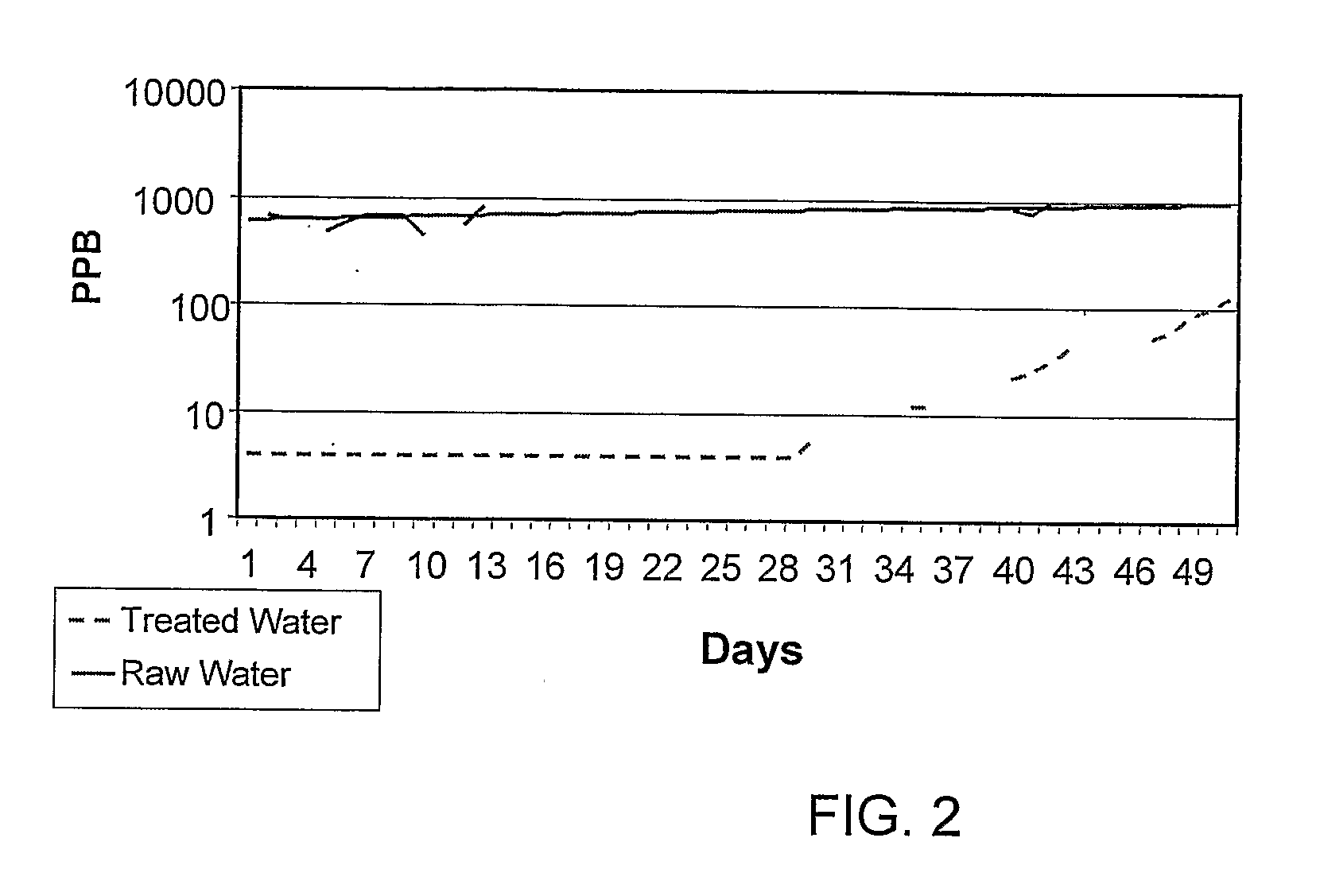Method and system for removal of inorganic anionic pollutants from contaminated water
a technology of inorganic anionic pollutants and water, applied in the direction of gravity filters, loose filtering materials, cartridge filters, etc., can solve the problems of affecting the health of the environment, affecting the toxicity of the environment, and disrupting the function of the thyroid gland,
- Summary
- Abstract
- Description
- Claims
- Application Information
AI Technical Summary
Benefits of technology
Problems solved by technology
Method used
Image
Examples
examples
[0079]Materials. The clay used was Wyoming Na-montmorillonite SWy-2 obtained from the Source Clays Repository (Clay Minerals Society, Columbia, Mo.). Quartz sand (grain size 0.8-1.5 mm) was purchased from Negev Industrial Minerals (Israel). Octadecyltrimethylammonium bromide (ODTMA) and Cetylpyridinium (CP) were purchased from Sigma-Aldrich (Sigma Chemical Co., St. Louis, Mo.). Benzyldimethylhexadecylammonium chloride (BDMHDA) was purchased from Fluka Chemie (Buchs, Switzerland).
[0080]Structural formulae of surfactants are shown on FIG. 1.
[0081]Adsorption. ODTMA or BDMHDA were added to the solutions of pollutants. Pollutant-micelle complexes were kept stirring for 72 h. Then 10 ml of micelle-pollutant complexes were mixed in a polypropylene copolymer centrifuge tube with 5 ml of water suspension of montmorillonite. Experiments showed no adsorption of pollutants on the tubes. Concentrations of surfactants in suspensions were 2.5; 5 and 12 mM, i.e., much above their CMC values, which ...
PUM
| Property | Measurement | Unit |
|---|---|---|
| Fraction | aaaaa | aaaaa |
| Volume | aaaaa | aaaaa |
Abstract
Description
Claims
Application Information
 Login to View More
Login to View More - R&D Engineer
- R&D Manager
- IP Professional
- Industry Leading Data Capabilities
- Powerful AI technology
- Patent DNA Extraction
Browse by: Latest US Patents, China's latest patents, Technical Efficacy Thesaurus, Application Domain, Technology Topic, Popular Technical Reports.
© 2024 PatSnap. All rights reserved.Legal|Privacy policy|Modern Slavery Act Transparency Statement|Sitemap|About US| Contact US: help@patsnap.com









